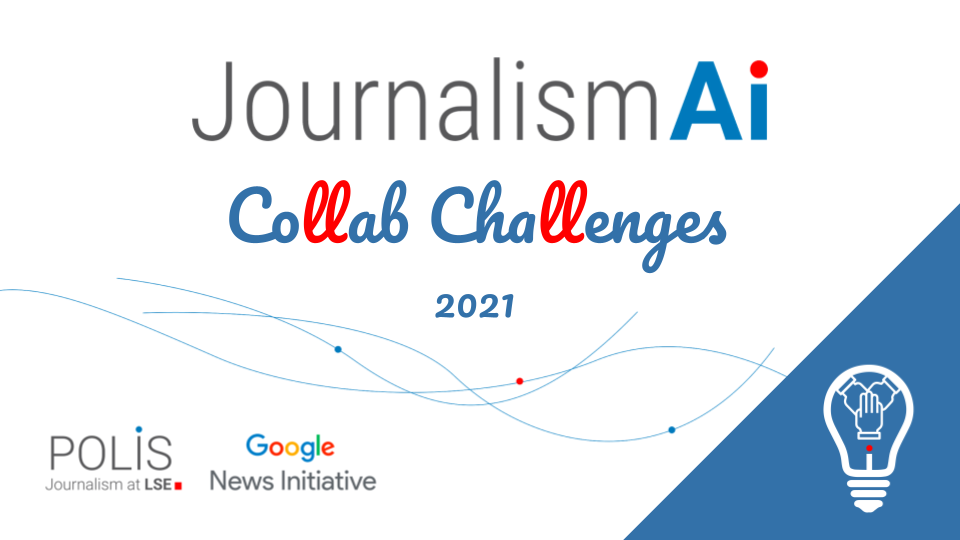JournalismAI aims to build bridges between newsrooms and the ever-changing world of AI. Inspired by the JournalismAI report, “New powers, new responsibilities”, we want to continue learning from the experiences of the newsrooms in our network that have successfully implemented AI-tools in their workflow.
In this new series, “Newsroom Leaders Tell Us”, we talk with newsroom leaders from across the world and ask them to share their learning curve.
Here’s our first episode, featuring answers from:
- Alison Gow, Audience and Content Director, North West at Reach plc
- Padraic Cassidy, Editor, Automation and News Technology at Reuters
- Ulrike Köppen, Head of AI + Automation Lab at Bayerischer Rundfunk
- Romain Rouquier, Director of Data at the South China Morning Post
- Olle Zachrison, Head of Digital News Development at Swedish Radio
What’s the most important thing to do or to avoid while developing an AI strategy?
1. Define your goal
For Alison Gow (Reach plc) the most important thing is to have a goal and an understanding of why AI is integral to achieving that goal.
“What is the question you are trying to answer? Why or where does AI become part of the solution? What barriers might come between you and the outcome? How can you overcome those barriers? Who needs to be involved to do this?”
Padraic Cassidy (Reuters) adds the following questions to Alison’s checklist: “What is this AI strategy for? To produce more content, at scale? To speed up the news workflow?”
questions to Alison’s checklist: “What is this AI strategy for? To produce more content, at scale? To speed up the news workflow?”
With the answers to these questions, newsrooms will be able to determine what tools they need including machine learning models, recommendation algorithms, reader engagement – adds Padraic.
“ Avoid making the AI aspect more important than the goal itself.”
- Alison Gow, Reach Plc
2. Gather an interdisciplinary team
“AI demands a flexible data infrastructure and very often new workflows and a new working culture,” says Ulrike Köppen (Bayerischer Rundfunk). For these reasons, it is essential to gather an interdisciplinary team from all over the organisation and ensure support from senior management.
“AI can only be deployed successfully if the whole organisation is standing behind the idea.”
Romain Rouquier (South China Morning Post) agrees that it is essential to have the right culture in place to allow for experimentation with AI-powered tools: “A culture of innovation where tests and failures are allowed”.
In this perspective, an assessment of the organisation’s AI-readiness must be the first step, according to Romain. To develop an effective AI strategy, the company needs to determine its data maturity and gather an interdisciplinary team that has the technical skills and talents that AI requires, as well as a strong understanding of the business needs and pain points.
From there, continues Romain, a successful AI strategy should focus on:
- Solving real user, operational, or business problems;
- Prioritising high impact but low-risk initiatives;
- Fostering AI adoption within the organisation via a better understanding of its opportunities and risks;
- Developing internal know-how.
“Working together on an AI strategy is an important step on the path to an effective use of AI in your organisation.”
- Ulrike Köppen, BR
3. Avoid being too grand in your visions and expectations
 Olle Zachrison (Swedish Radio) stresses the importance of starting slow when approaching AI in a newsroom: “There are so many cool ideas out there, but you can only prioritise a limited number of things. It’s very important to avoid being too grand in your visions and expectations.”
Olle Zachrison (Swedish Radio) stresses the importance of starting slow when approaching AI in a newsroom: “There are so many cool ideas out there, but you can only prioritise a limited number of things. It’s very important to avoid being too grand in your visions and expectations.”
Olle suggests that small experiments that focus on adding value for audiences can eventually be scaled up if successful or easily abandoned without investing too many resources and time in unrealistic projects.
In this regard, talking about an ‘AI strategy” can be counter-productive in itself, Olle adds: “Many of the computational systems that we have to build to enhance our digital output hardly qualify as “AI” in the sense that they are self-learning systems. AI is not an end in itself – it is ultimately the output to the audience that matters, to provide better services. Machine Learning technologies can play an important role as enablers, but those results often have to be achieved by a combination of both editorial and technical changes.”
This article was written by Sabrina Argoub and edited by Lakshmi Sivadas, JournalismAI Community Coordinators.
On our Twitter page, you can find our “Newsroom Leaders Tell Us” thread. Click here to join the conversation and leave your comments.
JournalismAI is a project of POLIS and it’s powered by the Google News Initiative.








